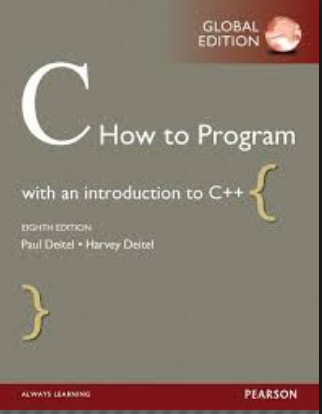C How to Program is a comprehensive introduction to programming in C. Like other texts of the Deitels’ How to Program series, the book serves as a detailed beginner source of information for college students looking to embark on a career in coding, or instructors
Introduction to programming in C
Basic data types
Logic operations
Conditional execution
Loops
Arrays
Functions
Pointers and memory
Strings
Multiple dimensions dynamic arrays
Using inline assembler
Welcome to the World of C Language
Welcome to the learn language free interactive C tutorial.Whether you are an experienced programmer or not, this website is intended for everyone who wishes to learn the C programming language.There is no need to download anything – Just click on the chapter you wish to begin from, and follow the instructions. Good luck!.still under construction – If you wish to contribute tutorials.
History Of C Language
The C programming language is a structure oriented programming language, developed at Bell Laboratories in 1972 by Dennis RitchieC programming language features were derived from an earlier language called “B” (Basic Combined Programming Language – BCPL)
C language was invented for implementing UNIX operating system
In 1978, Dennis Ritchie and Brian Kernighan published the first edition “The C Programming Language” and commonly known as K&R C
In 1983, the American National Standards Institute (ANSI) established a committee to provide a modern, comprehensive definition of C. The resulting definition, the ANSI standard, or “ANSI C”, was completed late 1988.
C PROGRAMMING LANGUAGE STANDARDS:
C89/C90 standard – First standardized specification for C language was developed by the American National Standards Institute in 1989. C89 and C90 standards refer to the same programming language.
C99 standard – Next revision was published in 1999 that introduced new features like advanced data types and other changes.
C11 AND EMBEDDED C LANGUAGE:
C11 standard adds new features to C programming language and library like type generic macros, anonymous structures, improved Unicode support, atomic operations, multi-threading and bounds-checked functions. It also makes some portions of the existing C99 library optional and improves compatibility with C++.
Embedded C includes features not available in C like fixed-point arithmetic, named address spaces, and basic I/O hardware addressing.
Operating systems, C compiler and all UNIX application programs are written in C language
It is also called as procedure oriented programming language. The C language is reliable, simple and easy to use. C has been coded in assembly language.
FEATURES OF C PROGRAMMING LANGUAGE:
C language is one of the powerful language. Below are some of the features of C language.
Reliability
Portability
Flexibility
Interactivity
Modularity
Efficiency and Effectiveness
USES OF C PROGRAMMING LANGUAGE:
The C programming language is used for developing system applications that forms a major portion of operating systems such as Windows, UNIX and Linux. Below are some examples of C being used.
Database systems
Graphics packages
Word processors
Spreadsheets
Operating system development
Compilers and Assemblers
Network drivers
Interpreters
WHICH LEVEL IS C LANGUAGE BELONGING TO?
There are 3 levels of programming languages. They are,
Middle Level languages:
Middle level languages don’t provide all the built-in functions found in high level languages, but provides all building blocks that we need to produce the result we want. Examples: C, C++
High Level languages:
High level languages provide almost everything that the programmerObject oriented language:dy built into the language. Example: Java, Python
Low Level languages:
Low level languages provides nothing other than access to the machines basic instruction set. Example: Assembler
C LANGUAGE IS A STRUCTURED LANGUAGE:
Structure oriented language:In this type of language, programs are divided into objects
Prime focus is in the data that is being operated and not on the functions or procedures
Data is hidden and cannot be accessed by external functions
Program structure follows “Bottom UP Approach”
Examples: C++, JAVA and C# (C sharp)
Non structure oriented language:
There is no specific structure for programming this language. Examples: BASIC, COBOL, FORTRAN
KEY POINTS TO REMEMBER IN C LANGUAGE:
The C language is a structure oriented programming language developed by Dennis Ritchie.
The C language is belonging to middle level programming language.
Operating system programs such as Windows, Unix, Linux are written in C language.
C89/C90 and C99 are two standardized editions of C language.
C has been written in assembly language.
Table of Contents
Basics of c language
Hello, World!
Variables and Types
Arrays
Arithmetics
Strings
For loops
While loops
Functions
Structures
Adwanced C Language term
Pointers
Structures
Function arguments by reference
Dynamic allocation
Arrays and Pointers
Recursion
Linked lists
Binary trees
Unions
Arithmetics
Function
Pointers
